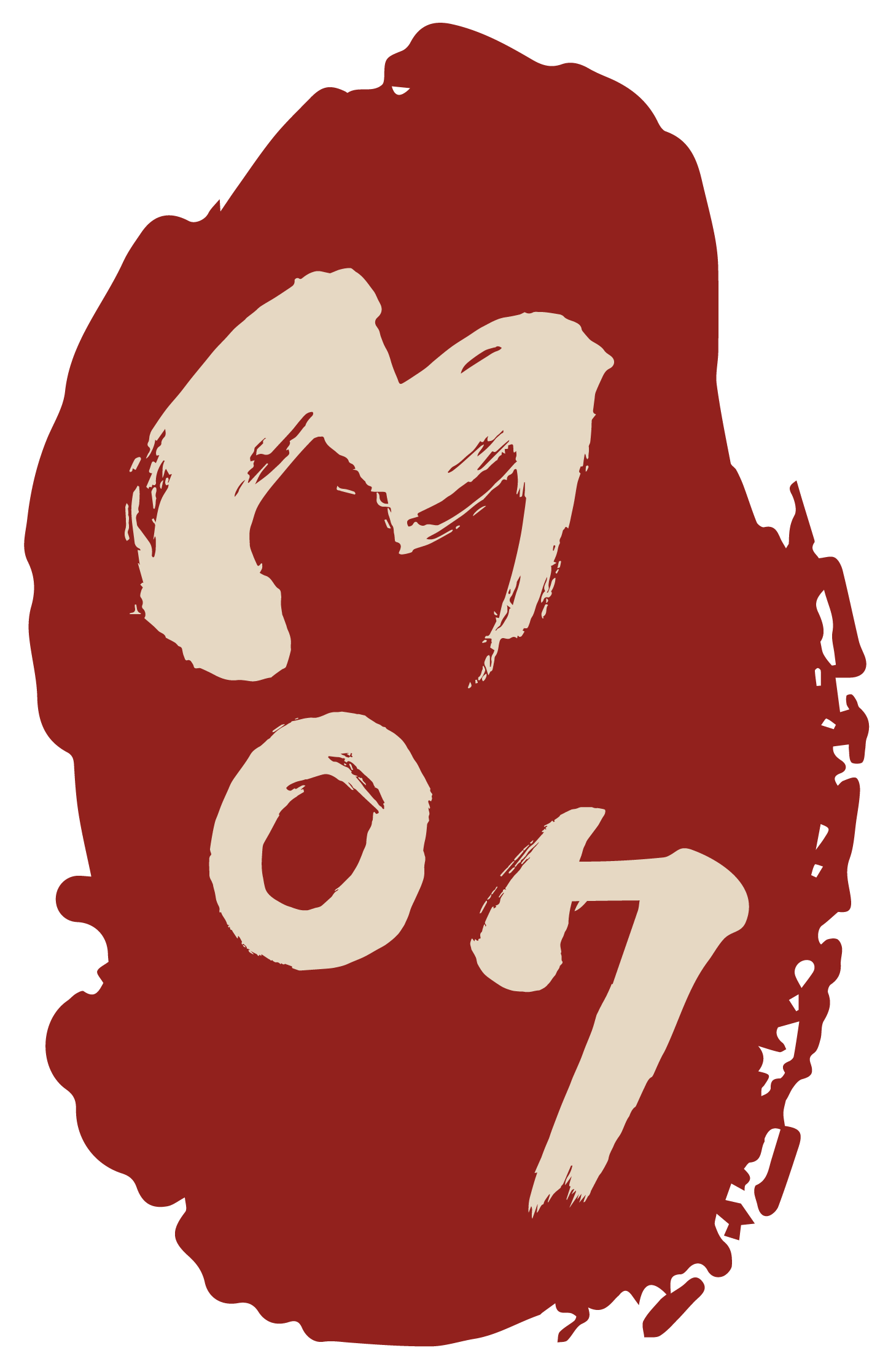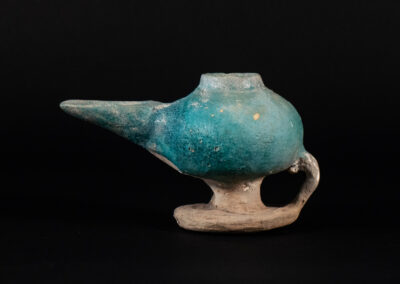Beakhead Vessel
Vessel with beak
The vessel in nonglossy turquoise colour and beige clay is of an extraordinary esthetic shape. The appearance is zoomorphic similar the head of an animal – duck or goose – with a long beak. The crown of the head has a rounded mouth, inside also colored. Added is a standfoot with a stable standing plate. Bottom somewhat unfortunately repaired.
Object ID
Persia_018
Age
about 2000 – 800 BC
Material
Ceramics
Color
turquoise / clay
Length
15 cm
Diameter (neck)
7.7 cm
Diameter (bottom)
6.9 cm
Height
8.5 cm
Height (standfoot / floorplate)
3 cm
Condition
good
Price
on request
Description
The vessel in nonglossy turquoise colour is of an extraordinary esthetic shape. The appearance is zoomorphic similar like the head of an animal – duck or goose – with a long beak.
The beak forms at the same time the spout. The crown of the head has a rounded mouth and is inside also colored like the spout. This refers to a vessel intended for liquid contents. Attached to the bulbous body is a standfoot with a recessed plate in rough beige ceramic that is connected with a handle reaching to the vessel-body. The bottom was somewhat unfortunately repaired. It clearly shows the traces of the bonding of shards. Those zoomorphic vessels in great variety of decoration, rim and pouring molds with striking beaks appear in Persia since about two thousands of years BC and were discovered as grave goods on archeological excavations in the Highlands of Iran. [1] The original use of those vessels has not yet been fully clarified. But, they are assumed to be grave offerings which possibly were thought for libations. [2] From the symbolism geese and ducks were lucky charms. (HV)
________________________
[1] Bleibtreu, Erika (2003): Bemalte Schnabelkanne und Schnabelkropfkanne mit Ritzdekor. In: Seipel, Wilfried (Hg.) (2003): 7000 Jahre Persische Kunst. Meisterwerke aus dem Iranischen Nationalmuseum in Teheran. Ausstellungskatalog. Antikenmuseum Basel und Sammlung Ludwig GmbH Bonn/Skira Editore Milano/Kunsthistorisches Museum Wien. 93 und 160-161
[2] Neumann, Reingard (2009): Schnabelkopfkanne mit Pferdekopf-Aufsatz. In: Grassi Museum für angewandte Kunst (2009): Ständige Ausstellung. Asiatische Kunst – Impulse für Europa. Leipzig. 114





